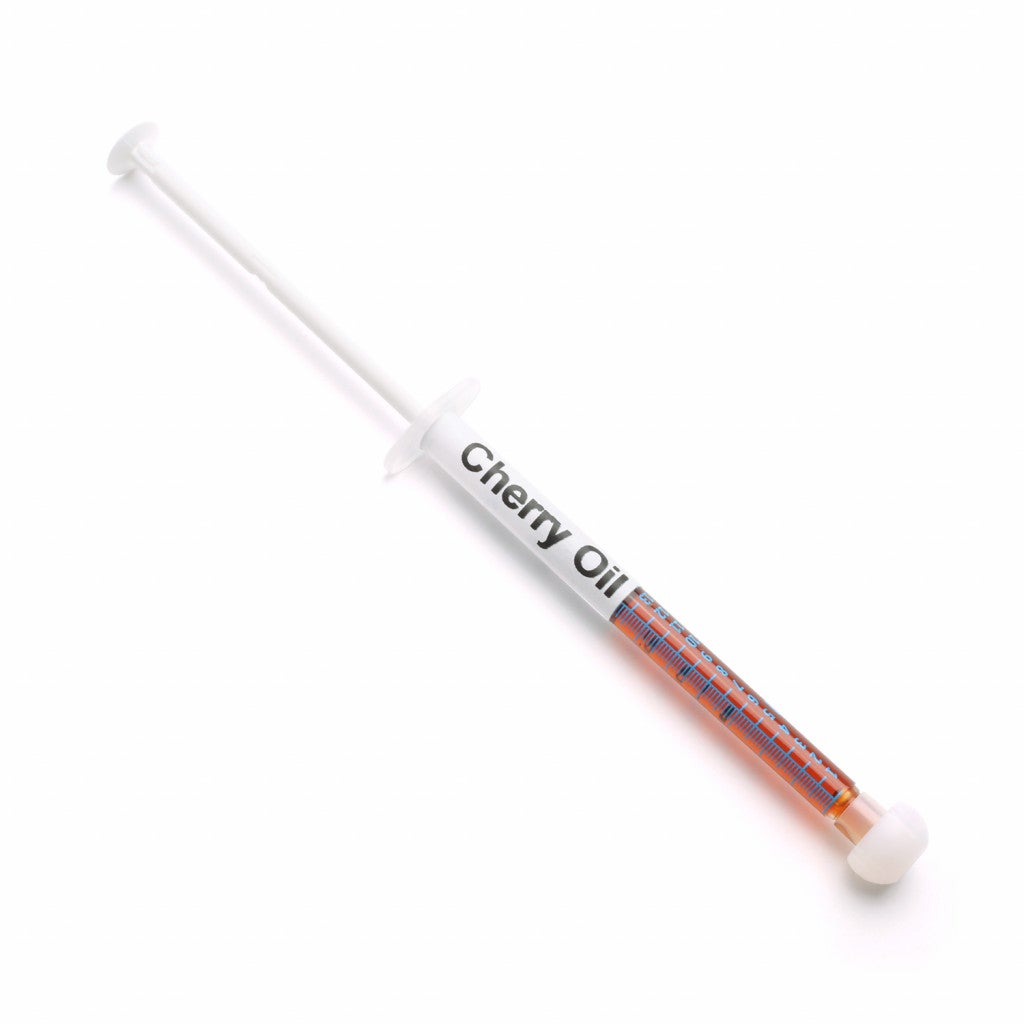Your cart is currently empty!
A Comprehensive Guide to Cherry Oil vs Honey Oil: Unraveling Their Potential for Relaxation and Pain Management

Caught in a dilemma between Cherry Oil vs Honey Oil for relaxation and pain management? You can make a better choice for your unique needs by learning about these intriguing cannabis extracts.
Table Of Content
Cherry Oil vs Honey Oil are two cannabis-derived products gaining popularity for therapeutic use. These potent extracts have gained recognition for their alleged roles in pain management and promoting relaxation. This comprehensive guide aims to shed light on these oils, helping potential users make an informed choice.
Cherry Oil and Honey Oil originate from the same source – the cannabis plant – but possess unique characteristics. This article explores the extraction processes, compositions, benefits, and comparative strengths in terms of relaxation and pain relief.
Understanding Cannabis Oils
Cannabis oil extraction is a process aimed at isolating the beneficial compounds, known as cannabinoids, from the plant material. The two primary cannabinoids are THC (Tetrahydrocannabinol) and CBD (Cannabidiol). In a 2018 Journal of Headache and Pain review, these cannabinoids showed promise in pain management.
Cherry Oil and Honey Oil are different despite originating from the same plant. The differences primarily lie in their extraction methods, resulting in unique compositions and properties. These distinctions may influence their effectiveness for relaxation and pain management, a topic we’ll delve deeper into as we progress.
What is Cherry Oil?
Cherry Oil is a form of cannabis oil recognized by its dark red or amber hue, reminiscent of cherry cola. The extraction process involves using a solvent like alcohol to separate the plant’s essential compounds. The extract is potent, boasting up to 65-70% THC content.
The benefits of Cherry Oil primarily stem from its high THC content. THC is a potent psychoactive compound that interacts with the body’s endocannabinoid system, potentially offering pain relief and promoting relaxation. Chronic pain may benefit from cannabinoids like THC, according to research published in the Journal of Oral & Facial Pain and Headache in 2015.
What is Honey Oil?
Contrarily, Honey Oil, commonly referred to as Hash Oil, is characterized by a golden colour akin to honey. It’s a potent cannabis extract, often containing 80-85% THC. Similar to Cherry Oil, Honey Oil extraction also utilizes a solvent.
Given its high THC content, Honey Oil is a strong contender for pain management and relaxation. Studies, including a 2020 publication in the European Journal of Pain, have demonstrated the promising role of THC-rich cannabis extracts, like Honey Oil, in pain relief.
The Flavour Profiles of Cherry Oil and Honey Oil
Tasting cannabis oil isn’t just about savouring the flavour; it’s also an appreciation of the plant’s complex profile and the extraction process that made it possible. Despite being derived from the same source, Cherry Oil and Honey Oil exhibit distinct flavour profiles that add to their appeal. Understanding these can enhance the user experience and even influence a person’s preference for one over the other.
Cherry Oil
Named for its rich, dark red, almost cherry cola-like hue, Cherry Oil is known for its robust and full-bodied flavour profile. The extraction process helps preserve many of the plant’s original terpenes, aromatic compounds that give cannabis its distinct flavours and aromas.
Cherry Oil’s flavour is often described as earthy and slightly sweet. The “cherry” in its name doesn’t denote a cherry flavour but refers to its colour. Its taste reflects the rich and complex profile of the cannabis strain used in its production. It’s a harmony of flavours ranging from floral and fruity notes to piney and spicy undertones. Cherry Oil is preferred for users who enjoy a multi-layered sensory experience.

Honey Oil
Honey Oil, also referred to as Hash Oil gets its name from its golden, honey-like appearance. Much like Cherry Oil, the taste of Honey Oil is largely influenced by the terpene profile of the cannabis strain from which it’s derived.
Honey Oil’s flavour profile is noted for being smooth, sweet, and slightly floral. Users often report experiencing a hint of natural sweetness, similar to honey, although it doesn’t taste explicitly like honey. The oil’s rich, nuanced flavour can also present subtle undertones of earthy and citrusy notes, adding to its overall complexity.
The difference in flavour profiles between Cherry and Honey Oil results from the extraction methods and the specific strains used. The full-spectrum nature of these oils means they contain a wide range of terpenes, each contributing to the oil’s final taste. Terpenes also interact synergistically with cannabinoids (the “entourage effect”), potentially enhancing their therapeutic effects, according to a 2011 review in the British Journal of Pharmacology.
Both Cherry Oil and Honey Oil offer unique and complex flavour profiles. The choice between the two often comes down to personal preference, with some users favouring the robust, earthy tones of Cherry Oil and others preferring the sweet, smooth notes of Honey Oil. As with any cannabis product, it’s all about finding what works best for you.

Health Benefits of Cherry Oil and Honey Oil
Cherry Oil and Honey Oil, while distinct in their extraction methods, composition, and flavour profiles, share a common characteristic—they both potentially offer an array of health benefits due to the presence of a wide spectrum of cannabinoids and terpenes.
Health Benefits of Cherry Oil
Cherry Oil, with its broad range of cannabinoids, including THC and CBD, has several health benefits. While the primary compound, THC, is popular for its psychoactive effects, it’s also famous for having potential therapeutic applications.
Pain Relief: Research published in the Journal of Pain and Symptom Management in 2010 suggests that THC, the primary cannabinoid in Cherry Oil, could have analgesic effects and may help alleviate chronic pain.
Stress and Anxiety Relief: The relaxing effects of THC may also help reduce stress and anxiety, according to a study in the Journal of Drug and Alcohol Dependence in 2017.
Appetite Stimulation: Cherry Oil can benefit individuals experiencing appetite loss due to medical conditions or treatments, as THC is popular for stimulating appetite, as noted in a 2011 review in Brain Research Reviews.
Health Benefits of Honey Oil
Honey Oil, similarly, offers health benefits attributed to its high concentration of cannabinoids, particularly THC.
Pain Management: The high THC content of Honey Oil makes it a potent option for pain management. A study in The Clinical Journal of Pain in 2019 found that medical cannabis could potentially reduce chronic pain symptoms.
Improved Sleep: According to a review in Current Psychiatry Reports in 2017, THC may also aid in sleep, which could benefit individuals suffering from insomnia or other sleep disorders.
Neuroprotective Effects: Some research, including a study in The Journal of Neuroscience in 2018, suggests that cannabinoids like THC may have neuroprotective effects, potentially beneficial for neurodegenerative diseases.
However, you must remember that these oils are potent, and you should use them responsibly, ideally under the guidance of a healthcare professional. This is particularly true for individuals with health conditions or those taking other medications. Despite research suggesting potential health benefits, we still need more studies to understand these oils’ therapeutic applications and safety profiles fully.
Comparative Analysis: Cherry Oil vs Honey Oil
Both Cherry Oil and Honey Oil exhibit substantial pain-relieving potential due to their high THC content. However, Honey Oil typically possesses a higher THC concentration, potentially indicating greater potency for pain relief.
In terms of relaxation, both oils leverage the psychoactive properties of THC. Users often report heightened states of tranquillity and calmness. However, individual experiences can vary depending on the dosage and individual tolerance.

Scientific Evidence: Cannabis Oils and Pain Management
Scientific evidence reinforces the effectiveness of Cherry Oil and Honey Oil for pain management. A survey of research by the Journal of Headache and Pain suggested the effectiveness of cannabinoids, the active constituents of Cherry and Honey Oil, in treating chronic pain.
The mechanics behind this lie in the interaction between cannabinoids and the body’s endocannabinoid system. This interaction plays a role in regulating pain, suggesting that Cherry Oil and Honey Oil could be useful tools for managing chronic pain.
User Experiences and Anecdotes
Beyond the empirical evidence, anecdotes also attest to the potency of Cherry and Honey Oils in inducing relaxation and managing pain. Users frequently report a sense of calm and significant pain reduction after using these oils. However, experiences can be subjective, varying based on the individual’s tolerance and the oil’s potency.
In addition to pain alleviation, users often credit Cherry Oil and Honey Oil with improved sleep quality and reduced anxiety levels. These firsthand accounts further underline the potential benefits of these cannabis oils for relaxation and pain relief, though one should supplement them with professional medical advice.
How to Use Cherry Oil vs Honey Oil for Maximum Relaxation and Pain Relief
If you want to try Cherry Oil or Honey Oil for relaxation or pain relief, start with a low dosage and gradually increase it. The ‘start low and go slow’ approach allows the user to gauge their individual response to these potent oils.
Given the strength of Cherry and Honey Oils, precautions are necessary. Consultation with a healthcare provider or a knowledgeable dispensary employee is mandatory before starting any regimen involving cannabis oils. These professionals can provide personalized advice based on your medical history and current medications.
Conclusion
Cherry Oil vs Honey Oil appear to offer considerable benefits in the pursuit of relaxation and pain relief, owing to their high THC content. They each exhibit unique characteristics, with Honey Oil generally having a higher THC concentration, potentially signifying a stronger effect.
However, individual responses can vary, and potential users must make informed decisions. Understanding these oils, their properties, and their interactions with the human body can help guide those decisions. As the field of cannabis research continues to expand, we may yet uncover further distinctions between Cherry and Honey Oils, leading to even more targeted applications in the realm of relaxation and pain management.
Frequently Asked Questions
1. What are Cherry Oil and Honey Oil?
Cherry Oil and Honey Oil are both highly potent cannabis extracts. They are full-spectrum, meaning they contain a wide range of cannabinoids, terpenes, and other compounds found in the cannabis plant. The main difference lies in their extraction methods, THC concentration, and flavour profiles.
2. What are the health benefits of Cherry Oil and Honey Oil?
Both Cherry Oil and Honey Oil have been associated with several health benefits due to their high cannabinoid content. These benefits include potential pain relief, stress and anxiety reduction, appetite stimulation, improved sleep, and possible neuroprotective effects. However, more research is needed to confirm these effects and fully understand the therapeutic potential of these oils.
3. What is the difference between Cherry Oil and Honey Oil?
Cherry Oil, typically darker in colour, is made using an alcohol-based extraction process. It has a more robust, earthy flavour and a THC concentration, usually around 60-70%. On the other hand, Honey Oil is golden and translucent, resembling honey. It’s made using a supercritical CO2 extraction method, resulting in a higher THC concentration, often exceeding 80%, and a smoother, sweeter flavour.
4. How do I use Cherry Oil and Honey Oil?
You can consume both oils in a few ways: vaporize them using a vape pen, add them to food or beverages, or place them under your tongue for sublingual absorption. However, due to their high potency, starting with a small dose is advisable and gradually increasing as needed.
5. What should I use, Cherry Oil vs Honey Oil, for pain management?
Due to their high THC content, both Cherry Oil and Honey Oil may offer potential analgesic effects. However, individual responses can vary, so you should consult a healthcare professional before using these oils for pain management, especially if you have a medical condition or take other medications.
6. Are there any side effects of using Cherry Oil and Honey Oil?
As with any cannabis product, there can be side effects such as dry mouth, dizziness, increased heart rate, and changes in mood or cognition. Using cannabis oils responsibly and starting with a low dose can help mitigate these potential side effects.
7. Are Cherry Oil and Honey Oil legal?
The legality of Cherry Oil and Honey Oil depends on local laws. In some places, cannabis and cannabis-derived products are legal for medicinal or recreational use. In others, they may be illegal or require a prescription. Always check your local laws before purchasing or using these oils.
Leave a Reply
You must be logged in to post a comment.